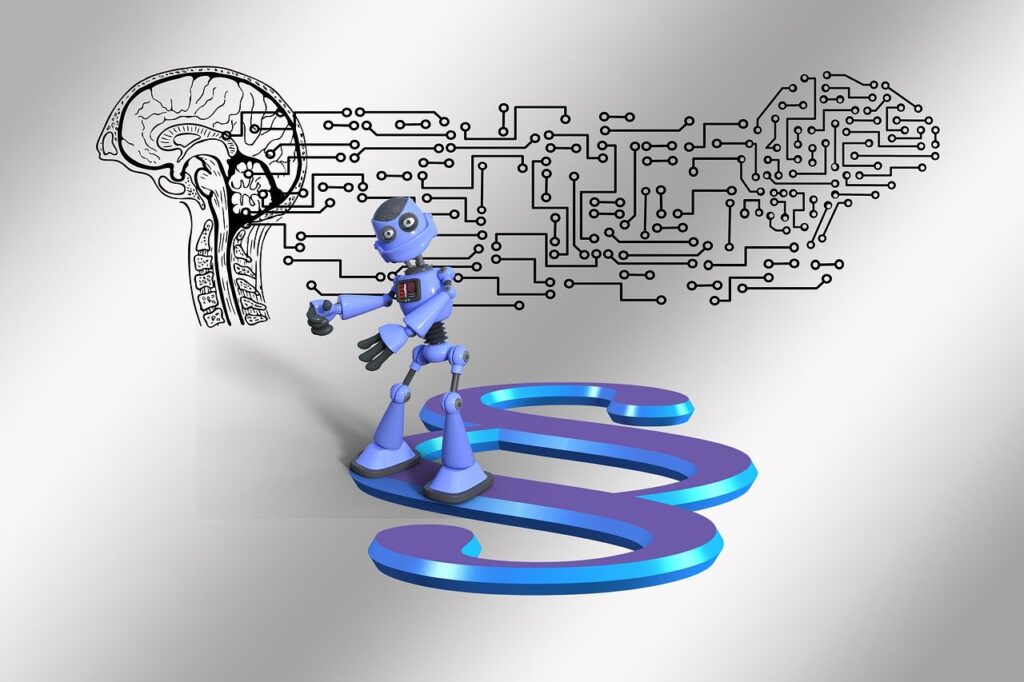In the ever-evolving landscape of technology, innovation is the driving force behind progress. And at the heart of innovation lies intellectual property protection, especially in the realm of software development. Software patents, while essential, can be a complex and daunting task to draft. Enter the world of AI-driven software patent drafting—a revolutionary advancement that leverages the power of Legal AI and Machine Learning to streamline and enhance the patent application process. In this comprehensive guide, we will delve deep into this cutting-edge technology, exploring its implications, benefits, and challenges. Whether you’re an attorney, a software developer, or just curious about the intersection of technology and legal practice, this article is your roadmap to understanding AI-driven Software Patent Drafting.
Understanding Legal AI and Machine Learning
Legal AI: Bridging Law and Technology
Before we dive into the specifics of AI-driven software patent drafting, let’s take a moment to understand the concept of Legal AI. Legal AI, also known as AI in legal practice, refers to the use of artificial intelligence and machine learning technologies to assist lawyers and legal professionals in various aspects of their work. These technologies are designed to analyze and process vast amounts of legal data, extract meaningful insights, and perform tasks that were once time-consuming and labor-intensive.

The Role of Machine Learning
Machine learning, a subset of artificial intelligence, is at the core of Legal AI. It involves the development of algorithms and models that allow computers to learn from data and make predictions or decisions without explicit programming. In the legal context, machine learning algorithms can be trained on historical legal documents, case law, and regulatory texts to recognize patterns, extract key information, and provide recommendations.
Legal AI and machine learning have already made significant strides in tasks like contract analysis, legal research, and e-discovery. But one area where they are poised to revolutionize legal practice is software patent drafting.
The Challenges of Software Patent Drafting
Complexity and Ambiguity
Software patents are notoriously intricate. They involve a complex interplay of technology, legal requirements, and industry standards. Drafting a software patent requires a deep understanding of both the technology involved and the legal framework governing patents. It’s a task that demands precision and attention to detail, as even minor errors or omissions can lead to the rejection of a patent application.
Evolving Technology
Another challenge in software patent drafting is the rapid pace of technological advancement. Software development is a dynamic field, with new technologies, programming languages, and methodologies emerging regularly. Patent attorneys must stay up-to-date with these changes to ensure that their patent applications are both technically accurate and aligned with current industry practices.
Time and Cost
Drafting a software patent can be a time-consuming process. It involves extensive research, analysis, and documentation. For law firms and businesses, this translates into high costs associated with attorney fees and the opportunity cost of the time spent on drafting. Additionally, the patent examination process itself can be lengthy, stretching the timeline for obtaining patent protection.
Risk of Rejection
Perhaps the most significant challenge in software patent drafting is the risk of rejection by patent offices. Patent examiners scrutinize applications closely, searching for prior art (existing technology or patents) that may invalidate the claimed invention. With software patents, the boundaries of what is considered novel and non-obvious can be particularly ambiguous, making it challenging to navigate the patent examination process successfully.
The Rise of AI-driven Software Patent Drafting
Leveraging Legal AI and Machine Learning
AI-driven software patent drafting offers a promising solution to the challenges outlined above. By harnessing the power of Legal AI and machine learning, this innovative approach aims to transform the way software patents are drafted, making the process more efficient, accurate, and cost-effective.
Automated Prior Art Search
One of the key features of AI-driven software patent drafting is its ability to conduct automated prior art searches. Prior art refers to any publicly available information that is relevant to the patentability of an invention. This includes existing patents, academic papers, and technical documentation. Traditional prior art searches involve manual research, which can be time-consuming and may miss relevant references. AI, on the other hand, can rapidly analyze vast databases of prior art to identify relevant documents with a high degree of accuracy.
Natural Language Processing (NLP)
Natural Language Processing is a subset of AI that enables computers to understand and generate human language. In the context of software patent drafting, NLP plays a crucial role in extracting information from technical documents and generating patent claims and descriptions in a language that complies with legal requirements. NLP-powered systems can analyze the technical specifications of an invention and translate them into patent language, reducing the burden on patent attorneys.
Predictive Analytics
Predictive analytics, another facet of AI, can assist patent attorneys in evaluating the patentability of a software invention. By analyzing the historical decisions of patent examiners and the outcomes of previous patent applications, predictive analytics can provide insights into the likelihood of success for a particular patent application. This helps attorneys make informed decisions about pursuing a patent and can save valuable time and resources.
Enhanced Collaboration
AI-driven software patent drafting tools often come with collaborative features that facilitate communication and teamwork among patent attorneys, inventors, and stakeholders. These platforms allow multiple parties to work on a patent application simultaneously, share feedback, and track progress in real-time. This not only improves efficiency but also ensures that the final patent application is well-coordinated and comprehensive.

The Benefits of AI-driven Software Patent Drafting
Increased Efficiency
One of the most significant advantages of AI-driven software patent drafting is the substantial increase in efficiency. Tasks that would typically take weeks or months can be completed in a fraction of the time. Automated prior art searches, natural language processing, and predictive analytics combine to streamline the drafting process, allowing patent attorneys to focus their expertise on critical decision-making rather than repetitive tasks.
Cost Savings
Efficiency gains translate directly into cost savings. For law firms and businesses, reducing the time spent on patent drafting means lower attorney fees and quicker time-to-market for innovative software products. Additionally, the risk of having a patent application rejected due to errors or omissions is significantly reduced, further lowering the overall cost of obtaining patent protection.
Improved Patent Quality
AI-driven software patent drafting tools are designed to minimize errors and ensure that patent applications are comprehensive and technically accurate. By automating the generation of patent claims and descriptions, these tools can help eliminate common mistakes that can lead to patent rejections. The result is a higher quality of patents that are more likely to withstand scrutiny during the examination process.
Enhanced Strategic Decision-Making
With the aid of predictive analytics, patent attorneys can make more informed strategic decisions regarding patent applications. They can assess the likelihood of success, prioritize patent filings, and allocate resources more effectively. This data-driven approach empowers organizations to make strategic choices that align with their business objectives.
Ongoing Maintenance and Portfolio Management
AI-driven software patent drafting extends beyond the initial application process. These tools can also assist in managing and maintaining a portfolio of patents. They can monitor changes in patent law, track competitors’ patent activity, and provide recommendations for portfolio optimization. This ongoing support ensures that software patents remain valuable assets for years to come.
Challenges and Considerations
Data Privacy and Security
As with any technology that relies on data analysis, data privacy and security are paramount concerns. AI-driven software patent drafting tools require access to vast amounts of sensitive information, including technical specifications and legal documents. It is crucial to ensure that these tools adhere to stringent data protection standards and regulations to safeguard confidential information.
Ethical Considerations
The use of AI in legal practice raises ethical questions, particularly concerning the role of human attorneys. While AI can automate many tasks, the final decision-making and legal judgment should ultimately rest with qualified legal professionals. It’s essential to strike a balance between leveraging AI’s capabilities and preserving the integrity of the legal profession.
The Future of AI-driven Software Patent Drafting
AI-driven software patent drafting is poised to reshape the landscape of intellectual property protection. As AI technologies continue to advance, we can expect even more sophisticated tools that further streamline the patent application process. Additionally, AI may play a pivotal role in addressing global patent backlogs and increasing access to patent protection for innovators worldwide.
Embracing Innovation
In conclusion, AI-driven software patent drafting is a game-changer for the legal and technology industries. It offers a path to increased efficiency, cost savings, and improved patent quality. While challenges and ethical considerations remain, the benefits of harnessing AI and machine learning in patent drafting are undeniable. As we look to the future, embracing innovation in legal practice is essential for staying competitive in the ever-evolving world of technology.
Ethical Considerations in AI-driven Software Patent Drafting
AI-driven software patent drafting undoubtedly presents significant advantages, but it also introduces a set of ethical considerations that should not be overlooked. As we delve deeper into this evolving field, it’s crucial to address these ethical concerns to ensure that the integration of AI in legal practice remains responsible and transparent.
Preserving Human Oversight
While AI systems have the capacity to automate many aspects of software patent drafting, the role of human oversight remains paramount. It’s essential to strike a balance between leveraging AI’s capabilities and preserving the ethical obligation and expertise of human attorneys. Legal professionals should maintain control over decision-making and ensure that AI tools are used as aids rather than replacements. This ensures that ethical and strategic considerations are not compromised by algorithmic decisions.
Bias and Fairness
AI systems are only as unbiased as the data they are trained on. In the context of software patent drafting, if the training data used for AI models contains biases, those biases can manifest in patent applications and decisions. Addressing bias and ensuring fairness in AI-driven software patent drafting is essential to prevent discrimination or inequity in the patenting process. Legal practitioners and AI developers must actively work to identify and mitigate bias in both training data and algorithms.
Transparency and Accountability
The ‘black box’ nature of AI algorithms poses challenges in terms of transparency and accountability. When AI generates patent applications or recommendations, it can be challenging to understand the reasoning behind its decisions. To address this, efforts should be made to develop explainable AI (XAI) systems that provide insight into the AI’s decision-making process. Moreover, clear lines of accountability must be established to determine who is responsible for the outcomes of AI-generated patent applications.
Privacy and Data Security
AI-driven software patent drafting tools require access to vast amounts of sensitive information, including technical specifications and legal documents. Maintaining robust data privacy and security measures is not only an ethical consideration but also a legal requirement. It’s crucial that these tools adhere to data protection standards and regulations to safeguard confidential information from unauthorized access or breaches.

Encouraging Ethical AI Development
Promoting ethical AI development in the realm of software patent drafting is a collective responsibility. Legal practitioners, AI developers, policymakers, and industry stakeholders should collaborate to establish ethical guidelines and best practices for AI-driven patent drafting. Initiatives such as auditing AI systems for bias, ensuring transparency in algorithmic decision-making, and creating frameworks for human oversight can help mitigate ethical concerns.
In conclusion, as AI-driven software patent drafting continues to gain prominence, ethical considerations must be at the forefront of its development and implementation. By preserving human oversight, addressing bias, ensuring transparency and accountability, and upholding data privacy, we can harness the power of AI while maintaining the ethical integrity of the patenting process. Striking this balance is essential for realizing the full potential of AI in legal practice.
